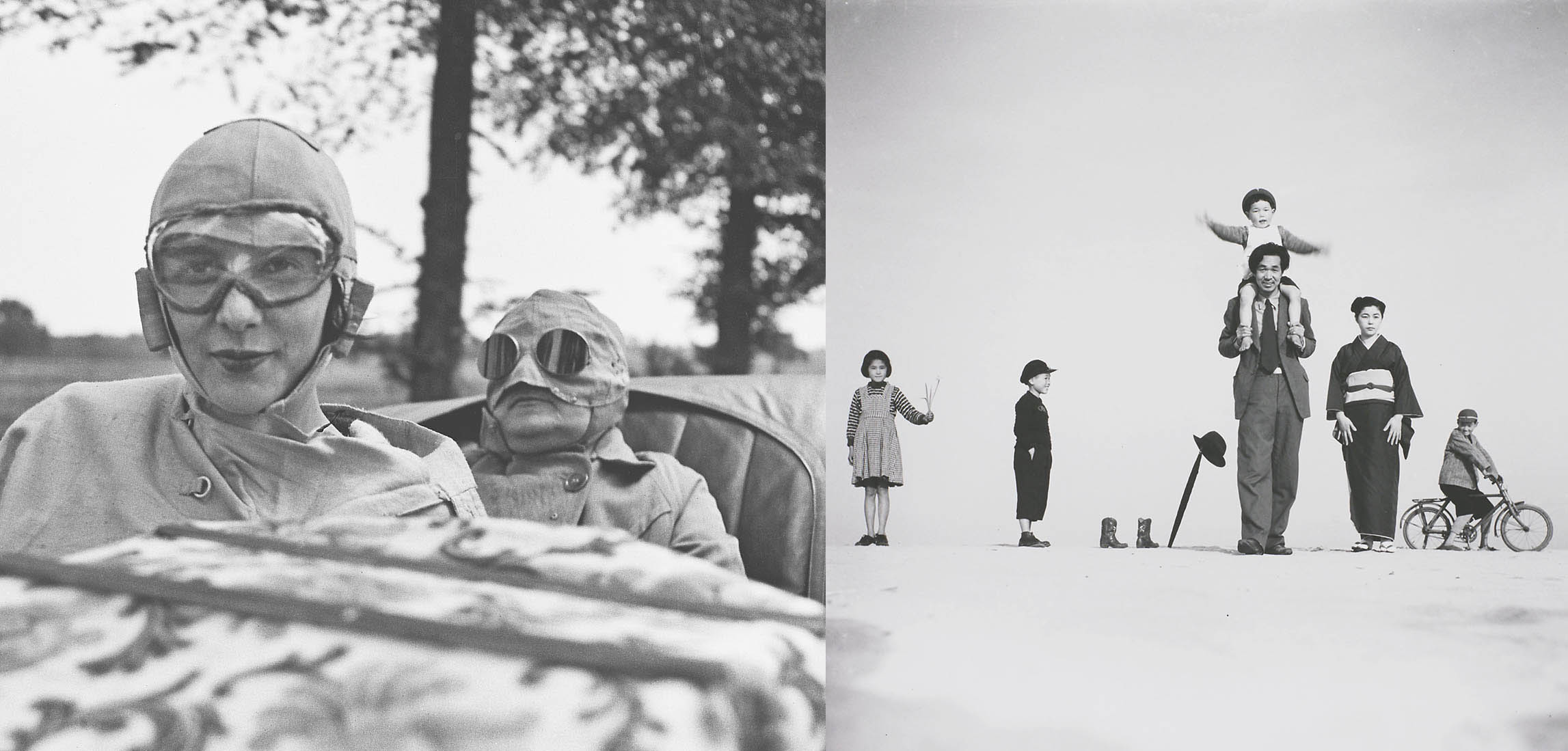In an intriguing double-header, two of photography's more colorful characters are exhibited together at the Tokyo Metropolitan Museum of Photography, providing an interesting glimpse of the art form as play. Shoji Ueda (1913-2000) is probably best known for his surreal, sometimes comic images of figures amid the sand dunes of Tottori Prefecture, while Jacques Henri Lartigue (1894-1986), an amateur from a privileged background, has left to posterity ordinary situations made curious through his childlike gaze.
While both photographers are now recognized as being major figures in the history of photography, Ueda and Lartigue have, in part, been paired due to their self-professed "amateurism." Both started photography young, but while Lartigue was an autodidact who was ostensibly more interested in painting as a serious art form, Ueda had professional training in Tokyo and worked as a commercial photographer. Resistant to having his skills subsumed into the war effort, Ueda stopped taking photos after 1941, and when he returned to photography in the postwar period his quirky playfulness was at odds with the current of social realism, fiercely promoted by Ken Domon.
By the 1950s, however, Ueda's eclectic mixture of Dali-esque desert landscapes, nudes, bowler-hatted men and mischievous and unusual compositions was receiving positive attention both in Japan and abroad, especially in France, where in 1996 he was awarded the title of Chevalier des Arts et des Lettres.

















With your current subscription plan you can comment on stories. However, before writing your first comment, please create a display name in the Profile section of your subscriber account page.